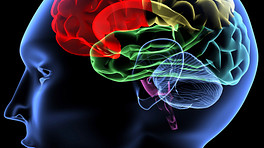Just as there are a variety of theories about how stress and other emotional or psychological factors can cause back pain, there are a variety of treatment approaches. The following outlines two approaches.
In This Article:
- Stress-Related Back Pain
- How Does Stress Cause Back Pain?
- The Diagnosis of Stress-Related Back Pain
- Treatments for Stress-Related Back Pain
Dr. Sarno’s Approach to Treatment of Chronic Pain
Dr. Sarno’s approach to patients with stress-related back pain or TMS, is one of emphasizing the psychological and emotional factors as causative and reassuring the patient as to the importance of a return to full physical functioning.
Dr. Sarno’s approach focuses almost entirely on the repressed emotions of anger or rage as the causative factors for back pain. Once the diagnosis of TMS is made it is strongly recommended to the patient to "think psychological, not physical" when the pain occurs. In addition, this treatment approach is generally limited to accepting the stress-related back pain for what it is (through a series of educational lectures) and/or getting psychotherapy to address the unconscious issues.
See 4 Tips to Help Cope With Chronic Pain and Depression
This theory and approach are very different than the way most physicians manage patients with these back symptoms.
Multi-disciplinary Treatment of Stress-Related Back Pain
NSAIDs provide anti-inflammatory effects and help calm inflammation and pain in the back.
The multi-disciplinary approach to treating stress-related back pain includes the evaluation of physical, emotional, cognitive, and environmental factors in all types of back pain problems and the development of treatments for each aspect. Thus, the multi-disciplinary formulation will look at the relative contribution of the following factors:
- Physical—including de-conditioned and weak muscles, nerve irritation, etc.
- Emotional—including depression, anxiety, anger, etc.
- Cognitive—such as negative thoughts, pessimism, hopelessness, etc.
- Environmental—such as loss of job, financial problems, etc
The multi-disciplinary (or integrated) approach defines and treats stress related back pain in somewhat broader terms than Dr. Sarno’s concept of TMS. With the multi-disciplinary approach, health care professionals do not always see the well-defined personality characteristics that Dr. Sarno discusses and do not focus on unconscious anger as the focal psychological issue.
This approach then develops a treatment program based upon how much each factor is thought to be influencing the pain. A multi-disciplinary program may include such treatments as:
- Treating the physical factors through re-activation oriented physical therapy and/or pain medications
- Treating the physical and emotional factors through appropriate medications (often including antidepressants or muscle relaxants)
- Treating the emotional and cognitive factors through psychological pain management techniques and biofeedback
- Treating the environmental factors through counseling or therapy
The idea of multidisciplinary treatment of back pain has been around for at least 25 years. It has been shown to be quite successful; although, the key factor in treatment outcome is the motivation of the patient to complete a rehabilitation approach.









